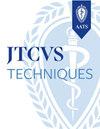Transvenous pacing leads implanted in epicardial position: A recipe for future epicardial pacing electrode?
IF 1.9
Q3 CARDIAC & CARDIOVASCULAR SYSTEMS
引用次数: 0
Abstract
Objective
Finding an optimum epicardial pacing site in children needing lead replacement can be challenging. We report the midterm outcome of using transvenous SelectSecure leads in the epicardial position.
Methods
Between 2018 and 2020, 6 patients (5 children and 1 adult) received 8 SelectSecure 3830 leads (“off-label”) in the epicardial position: both the left atrium and left ventricle in 2 patients, only the left ventricle in 3 patients, and the right ventricle in 1 patient. The median age at lead implantation was 14 (4-35) years. Periodic pacing threshold, sensing, and impedance measurements were analyzed.
Results
Lead implantations could be performed in all patients without complications, despite scarring from previous surgeries. The median pacing, sensing, and impedance measurements for 6 ventricular leads were 0.75 V, 6.5 mV, and 576 Ohm, respectively. The same for 2 atrial leads were 1.25 V, 2.5 mV, and 758 Ohm, respectively. During a follow-up period of 23.4 (8-32) months, despite a small increase at 6 months, pacing and sensing parameters remained acceptable. One reoperation occurred after the follow-up period due to lead dysfunction. One young patient with a complex structural heart disease and terminal heart failure on a ventricular assist device died while waiting for a heart transplant.
Conclusions
The implantation of transvenous leads in the epicardial position is feasible and provides an alternative for cardiac pacing in patients with multiple previous surgeries and epicardial scarring. This lead design, although appealing, poses challenges for stable epicardial fixation. A larger experience and longer follow-up would decide its exact role in epicardial pacing.
经静脉起搏导线植入心外膜位置:未来心外膜起搏电极的处方?
目的寻找一个最佳的心外膜起搏位置对需要铅置换的儿童是具有挑战性的。我们报告在心外膜位置使用经静脉SelectSecure导线的中期结果。方法2018年至2020年间,6例患者(5例儿童和1例成人)在心外膜位置接受了8根SelectSecure 3830导联(“标签外”):2例患者同时使用左心房和左心室,3例患者仅使用左心室,1例患者使用右心室。铅植入的中位年龄为14(4-35)岁。分析周期性起搏阈值、传感和阻抗测量。结果所有患者均可进行铅植入,除既往手术留下疤痕外,无并发症。6个心室导联的中位起搏、感应和阻抗测量值分别为0.75 V、6.5 mV和576欧姆。两根心房导线的电压分别为1.25 V、2.5 mV和758欧姆。在23.4(8-32)个月的随访期间,尽管在6个月时略有增加,但起搏和传感参数仍可接受。随访期后因铅功能障碍再次手术1例。一名患有复杂结构性心脏病和终末期心力衰竭的年轻患者在等待心脏移植时死亡。结论经静脉导线在心外膜位置植入是可行的,为多次手术和心外膜瘢痕患者提供了一种心脏起搏的选择。这种设计虽然吸引人,但对稳定的心外膜固定提出了挑战。更广泛的经验和更长时间的随访将决定其在心外膜起搏中的确切作用。
本文章由计算机程序翻译,如有差异,请以英文原文为准。
求助全文
约1分钟内获得全文
求助全文

 求助内容:
求助内容: 应助结果提醒方式:
应助结果提醒方式:


